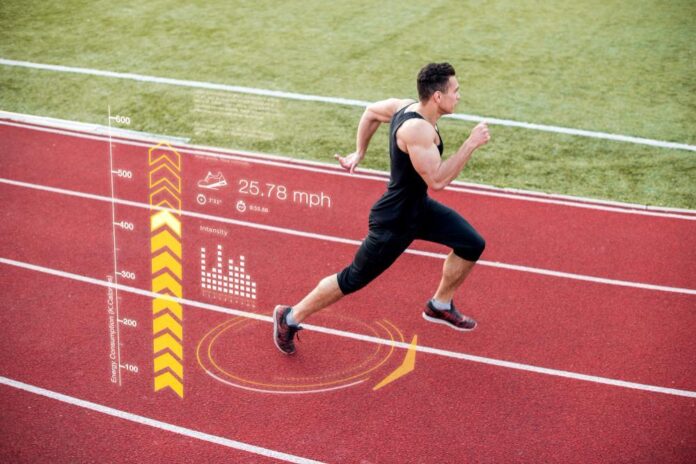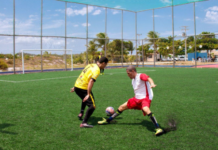Running is not just a physical activity; it’s a science that combines the intricate coordination of muscles, joints, and movement patterns. One key aspect of running that often goes overlooked is biomechanics – studying how the body moves and interacts during physical activities. Understanding and perfecting your running form through biomechanics can significantly enhance your performance, reduce the risk of injuries, and optimize your overall running experience. In this article, we delve into the essential role of biomechanics in refining your running technique and explore how innovative tools like the running vest phone holder and Lumefit can complement this journey.
1. The Fundamentals of Biomechanics
Biomechanics is the foundation upon which athletic performance rests. It delves into the intricate mechanisms that govern how our bodies move and respond to various forces. When it comes to running, biomechanics helps us comprehend how different muscle groups, joints, and bones collaborate to achieve efficient locomotion. It’s not just about running faster or longer; it’s about running smarter. By understanding the fundamentals of biomechanics, you can optimize your running form to achieve better results with less effort.
2. The Impact of Running Form
Running with poor form can harm both short-term performance and long-term health. Incorrect biomechanics can lead to excessive stress on certain joints, muscles, and ligaments, increasing the risk of injuries. On the other hand, a well-maintained running form ensures that the impact forces are distributed evenly throughout the body, reducing the risk of overuse injuries. Moreover, proper form improves running economy, allowing you to cover longer distances with less energy expenditure.
3. Analyzing Your Biomechanics
Each individual’s biomechanics are unique, influenced by anatomy, flexibility, and muscle imbalances. Analyzing your running form through video analysis can provide valuable insights into your strengths and areas that require improvement. Identifying issues such as overstriding, excessive vertical oscillation, or inadequate arm swing can help you fine-tune your technique. Incorporating regular gait analysis into your training routine can be a game-changer in your journey toward perfecting your running form.
4. The Role of Footstrike
Footstrike – how your foot contacts the ground while running – is a critical element of biomechanics. There are three main types of footstrike: heel strike, midfoot strike, and forefoot strike. Each type has advantages and disadvantages, depending on running speed and foot anatomy. Understanding your natural footstrike pattern can help you adjust your form to minimize the risk of injuries and maximize efficiency. Biomechanics research has shown that a midfoot or forefoot strike is generally associated with reduced impact forces compared to a heel strike. Still, it’s important to work on the transition gradually to avoid overloading different muscles and tendons.
5. Enhancing Biomechanics with Innovative Tools
In the modern era, technology has introduced innovative tools to enhance biomechanics and running form. One such tool is the running vest phone holder. Carrying your phone while running can be cumbersome and affect your arm swing and posture. A running vest phone holder offers a convenient way to carry your phone, allowing you to focus on maintaining proper form without distractions. This small adjustment can have a significant impact on your running experience.
Another innovative tool that aligns with biomechanics is Lumefit – a wearable device that provides real-time feedback on your running form. Lumefit uses sensors to monitor your movements and provides visual and auditory cues when your form deviates from the optimal pattern. This immediate feedback helps you make on-the-fly corrections, gradually ingraining better biomechanics into your muscle memory. Lumefit acts as a coach and encourages mindful running, where you’re constantly aware of your body’s alignment and movements.
6. Biomechanics and Performance Enhancement
The interplay between biomechanics and performance is undeniable. Every adjustment to your running form based on biomechanical principles can translate into improved performance outcomes. Whether striving to shave seconds off your best or preparing for a marathon, optimizing your biomechanics can provide the needed edge. From the angle of your arm swing to the alignment of your pelvis, every aspect contributes to efficient movement and reduced energy wastage.
Conclusion
Biomechanics is the silent hero that underlies every successful run. Perfecting your running form by understanding biomechanics can unlock your true athletic potential and safeguard your well-being. As you stride towards achieving your running goals, consider incorporating tools like the running vest phone holder for convenience and devices like Lumefit for real-time feedback. Remember, running is not just about covering distances; it’s about embodying the harmony of movement and reaping the rewards of optimal biomechanics. So, lace up, focus on your form, and let biomechanics propel you forward, one graceful step at a time.











